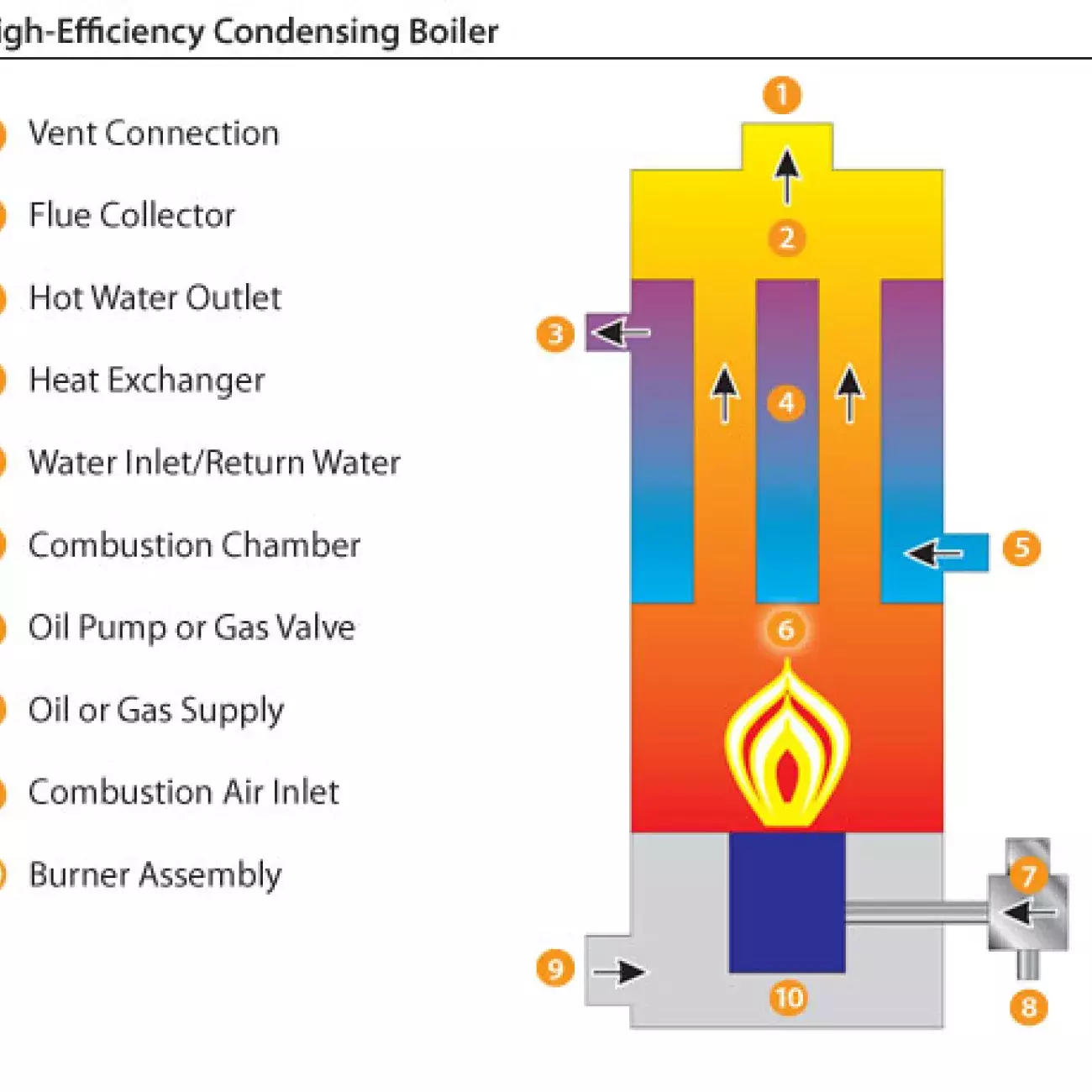Boilers
Boilers can be used to provide hot water to warm a single radiant heater like a towel warmer or they can be used to warm an entire home. The hot water generated in the boiler can also be used to provide consumable hot water to your kitchen and bathroom, as well as to your swimming pool, sauna, whirlpool or hot tub. A boiler also can provide the hot water that flows through durable tubing installed under your driveway, patio and sidewalks to melt snow and ice.
Today’s hydronic boilers used in homes are compact and energy efficient. Smaller boilers use a tankless coil or indirect water heater to supply hot water to showers, washing machines and sink facets.
How it Works
In the boiler, water is usually heated to a pre-set temperature between 160- to 180-degrees Fahrenheit. The hot water is then circulated by pumps through pipes in the home. This heated water then warms radiators installed in the rooms. As the cool air in the room flows over and through the radiator, it is warmed. As the heat from the water inside the radiator is released into the air, the water inside the radiator is cooled and returns back to the boiler to be reheated.
The primary energy source for modern residential boilers is the combustion of oil or natural gas. Heat is created during the combustion process when air mixes with the fuel and is burned. Residential gas boilers typically use a pilot to ignite the flame, while residential oil burners are ignited using direct spark of the oil flame. In all cases, the burned fuel is exhausted to the outdoors.
High-Efficiency Condensing Boilers

In a boiler, moisture within the exhaust gases, created during the combustion process, are released through the chimney as vapor and expelled outside. During this process heat is lost. To improve efficiency, modern residential boilers are equipped with a condensing boiler. It captures the water vapor produced by the burning of gas or oil in the boiler and condenses it back into liquid water.
The boiler uses a heat exchanger so that incoming air or water cools the exhaust, forcing the condensation of the water vapor it contains; this heats the incoming air (if an air-to-air heat exchanger is used) or pre-heats the water (if an air-to-water heat exchanger is used). A small part of the added efficiency of the condensing boiler is from the cooling of the exhaust gases, but the majority of the energy recovered is from the condensation of the water vapor in the exhaust gases.
The actual operating efficiency of a condensing boiler depends on the ambient air temperature and the relative humidity. If the incoming air is at 100 percent relative humidity, the condensing boiler will operate at its maximum efficiency. As the relative humidity falls, so will the actual efficiency of the condensing boiler because less of the water vapor produced can be recovered from the exhaust.
Combination Boilers
A combination boiler provides instant hot water for kitchens, bathrooms, pools and hot tub, in addition to space heating for a central system or individual hydronic applications. Both functions are combined within one compact boiler unit, eliminating the need for a separate conventional water heater appliance in your home.
Combination boilers offer significant savings on hot water costs, as you only heat the water you use. Plus they operate using water pressure, meaning you can enjoy a powerful shower without the need for a water pump.